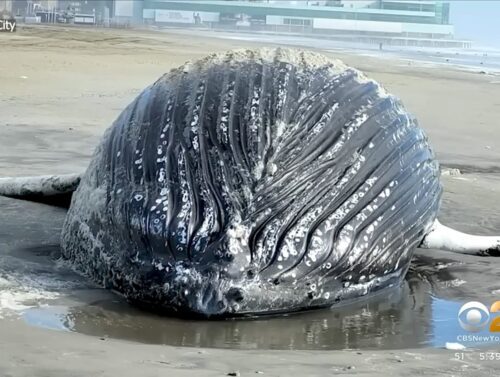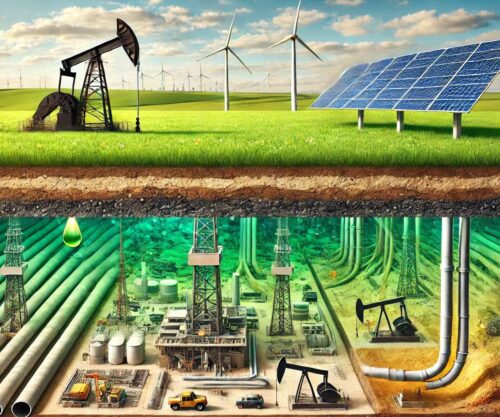
When most people think of ASEAN—a diverse association of Southeast Asian nations that include Brunei, Cambodia, Indonesia, Laos, Malaysia, Myanmar, the Philippines, Singapore, Thailand, and Vietnam—they picture Thailand’s beaches, Singapore’s gleaming skyline, or Indonesia’s temples. [emphasis, links added]
What they don’t see is an economic juggernaut that will drive some of the planet’s largest growth in energy demand.
Vietnam has emerged as a global manufacturing hub. Indonesia processes the world’s nickel for electric vehicle batteries. Thailand manufactures automobiles for export across Asia.
Each of these economic engines demands reliable, affordable electricity that operates 24 hours a day, seven days a week.
In fact, 2023 witnessed a demand increase of nearly 45 terawatt-hours (TWh), an amount of energy that must be generated, transmitted regionally, and delivered locally and continuously.
Where did this new power come from? Coal. An astonishing 96% of that new demand was met by coal-fired power plants.
Let that sink in.
Coal, the energy source routinely demonized in Western capitals and at global climate summits, met nearly all the region’s new electricity needs.
This reality stands in direct contradiction to rosy predictions of a transition to “renewables” manufactured by highly compensated executives at elite consulting firms who have spent the better part of a decade selling energy fairy tales to governments and investors.
Indonesia alone added 11 TWh of coal-generated electricity in 2023, while its electricity demand rose by 17 TWh, with coal meeting two-thirds of this increase. The Philippines generates more than 60% of its electricity from coal, and Malaysia and Vietnam each generate around 50%.
Ultra-supercritical coal technology—using extraordinarily high temperatures and pressures, and pioneered at Malaysia’s Manjung plant and Indonesia’s Batang facility—delivers higher efficiency than older coal plants.
These advanced facilities demonstrate that coal technology continues to improve while wind and solar remain dependent on weather conditions and the time of day.
The wind and solar share across ASEAN remained a pitiful 4.5% in 2023. This minuscule contribution exposes the bankruptcy of consultants’ promises of “renewables” dominating the regional power mix by the mid-2020s.
Coal’s dominance in recent years is not an accident; it is a necessity.
Indonesia, the region’s economic giant, leans on coal to power its export-driven industries, including nickel for EV batteries. Vietnam’s manufacturing boom, lifting millions into the middle class, runs on coal’s steady output. Malaysia and the Philippines, too, rely on coal to sustain their growing economies. Even Singapore, a global hub of innovation, depends on coal to maintain its energy security.
Yet, to focus solely on the power grid is to miss the forest for the trees, as electricity is just one component of total energy consumption.
Electricity represents only a fraction of total consumption across ASEAN. The larger picture is primary energy consumption, which includes fuel for transport, industry, and heating.
Oil, natural gas, and coal collectively hold the major share of ASEAN’s primary energy mix, with oil leading consumption patterns across transportation and industrial sectors. Factories, petrochemicals, shipping, aviation, and agriculture all consume fossil fuels in large quantities.
Countries don’t spend billions developing gas fields if they plan to abandon fossil fuels within the next decade.
ASEAN countries are committing hundreds of billions of dollars to fossil fuel infrastructure that will operate for decades.
Coal plants have an average lifespan of 40 years. These capital investments create long-term commitments to hydrocarbon use that extend far beyond current political cycles.
Nineteen projects across Malaysia, Vietnam, Brunei, Indonesia, and Myanmar hold more than 540 billion cubic meters of recoverable gas. Countries don’t spend billions developing gas fields if they plan to abandon fossil fuels within the next decade.
ASEAN’s embrace of coal is about more than just keeping the lights on. These nations aren’t chasing arbitrary climate targets; they’re building the infrastructure of their future and prosperity for people.
Every new airport, every new highway, and every new factory is a testament to the power of coal. To argue against coal is to oppose the physical manifestations of progress.
The “green” agenda, by seeking to eliminate coal, demands that the developing world stop building – an ultimatum that ASEAN is rightly and wisely ignoring.
Read more at CO2 Coalition



















Good for the ASEAN countries, ignoring what the supposedly enlightened Euro-elites who are actively destroying their economies with the “Green Energy” nonsense. As this article points out, the engineers in SE Asia have figured out how to make their coal plants even more efficient while noting that wind and solar have changed little in extracting more electricity from the wind and sun.
The ultra-high temperature/pressure of steam from the coal plants is exploiting the Rankine Cycle to extract more efficiency by using supersaturated steam. Something we learned about in Thermodynamics class in college. Coal plants have typically used a second pass through the plant to heat the steam to super-saturated levels but they must have figured out how to get it even higher. Due to the nature of nuclear plants they operate with steam that is saturated (that is, just at the boiling point for the pressure the liquid water/steam is at).